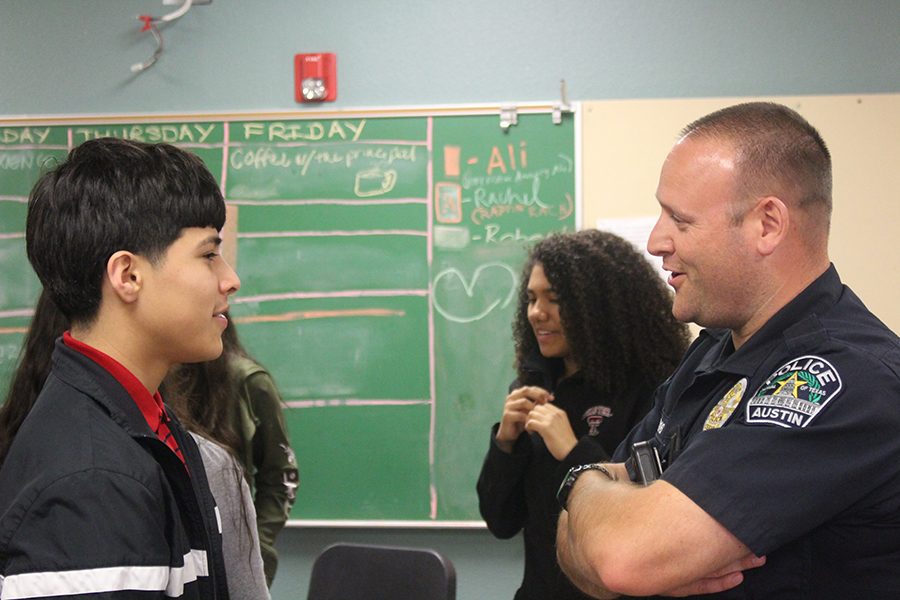New law requires students to learn police interaction
Officer Joshua Visi speaks to freshman Domanick Flores during a story sharing group activity. The Restorative Justice program has officers come in every Friday to build community relationships between officers and teenagers.
May 23, 2019
Following a string of deadly encounters between law enforcement and civilians, the Texas Legislature passed a law in 2017 that requires students to take a course that educates them how to interact with police.
The bill was passed after the high-profile case of Sandra Bland, was found hanged to death in her jail cell three days after being arrested for a traffic stop.
State Sen. Royce West, D-Dallas, one of the measure’s authors, said the bill wasn’t a “silver bullet” but a step in the right direction in a 2017 Texas Tribune article.
The Community Safety Education Act, requires all high school students to take a course that provides students with instruction on proper interaction with peace officers during traffic stops and other in-person encounters.
In Austin ISD, district officials announced that they intended to begin offering this instruction to freshmen enrolled in World Geography or World History courses. However, at Akins, this plan has caused confusion and problems for teachers because very few freshmen are enrolled in World Geography or World History.
So campus administration made the decision to offer the instruction through English 1 classes, which all freshmen are
required to take.
The district has designed a BLEND lesson that teachers use to offer the curriculum to students online. The lesson centers around watching a video and answering questions like “What are some things you should and should not do when interacting with a peace officer during a stop?” And “As you watch the video, think about how you would feel if you were stopped and how the officer feels.”
District officials estimate that the course will take students about 45 minutes to complete.
Sophomore Noemy Cervantes-Sainz, thinks that this class is important and believes now is a good time to get informed. “This class is important because for most students whenever they walk near a peace officer they most look away or avoid eye-contact or walk faster because they feel awkward and nervous,” she said. “But I do feel it’s better to have an actual peace officer (to talk to) instead of having to just watch a video on a computer.”
Kim Patton, who is the lead of the Restorative Justice program at Akins, said she is concerned about whether the lesson will help students because it is only being provided through an online curriculum.
“I do think this class is necessary, but I think they’re going at it the wrong way because it’s on the computer,” Patton said.
“That really is a big difference because when you meet an actual peace officer, you will learn that they are people too who are just in uniform, but when you do that on a computer, you don’t get to build a relationship with them. And the relationship that you do build will be fake.”







